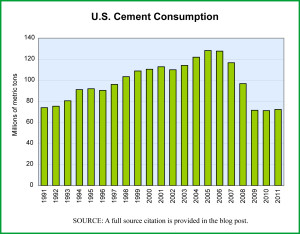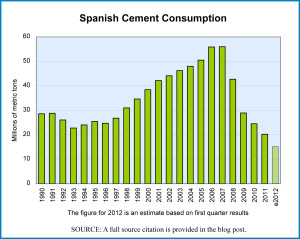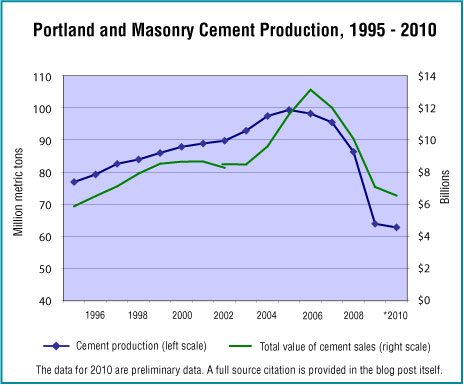Cement production in the world is dominated by China, whose production in 2011 accounted for 53.7% of all cement made globally. The third largest cement company in the world is China National Building Materials Company Limited often seen abbreviated as CNBM. Chinese companies also account for 7 additional companies on the 2011 list of the top 20 cement companies globally. The top two companies on that list are Lafarge (from France) and Holcim (from Switzerland).
Today’s market size is the total number of metric tons of cement produced worldwide in 2011, a number which represents a 9% increase on the 2010 figure.
Geographic reference: Worldwide
Year: 2011
Market size: 3.6 billion metric tons
Source: “Top 20 Global Cement Companies,” Global Cement Magazine, December 2012, page 14.
Original source: European Cement Association
Posted on December 13, 2012



